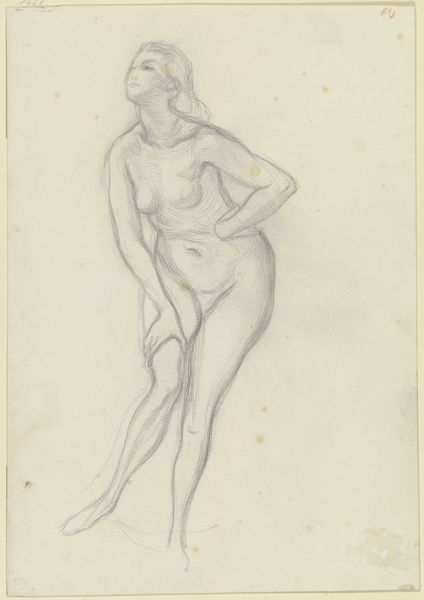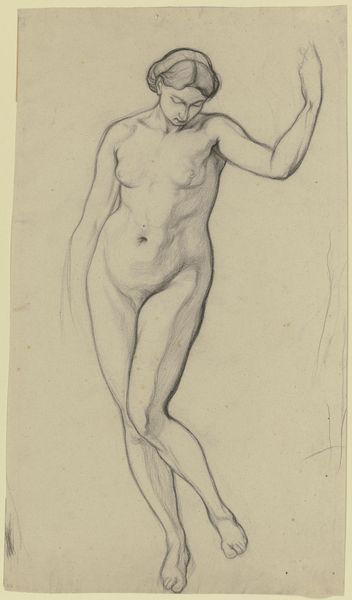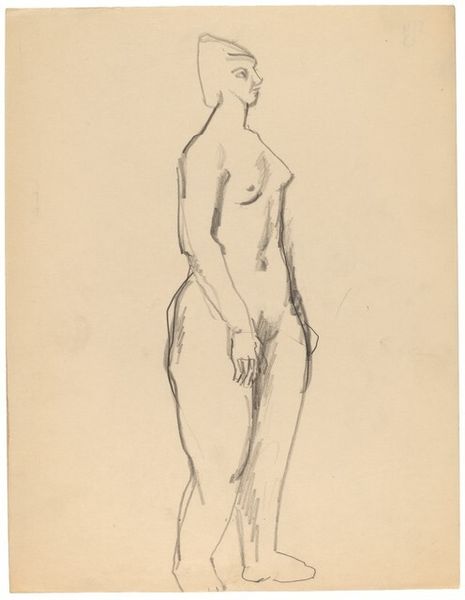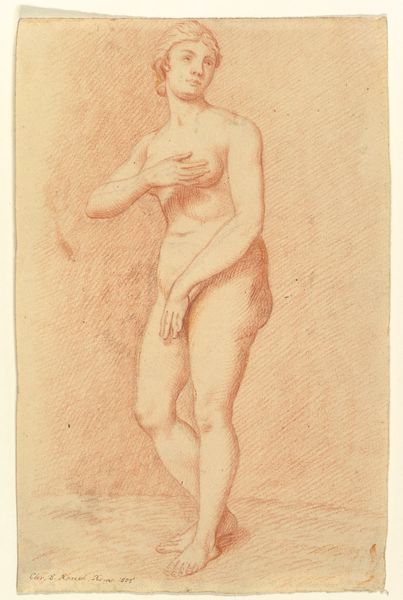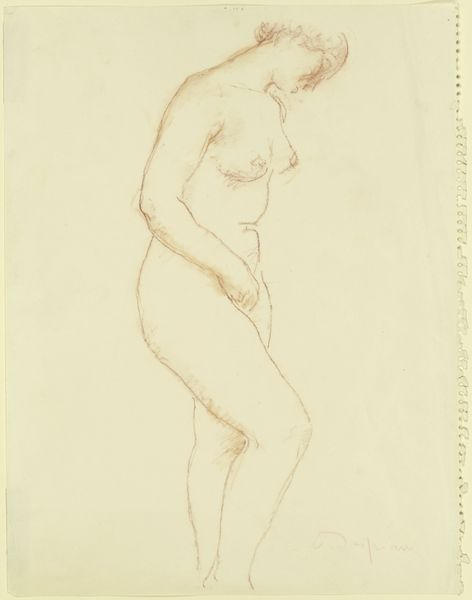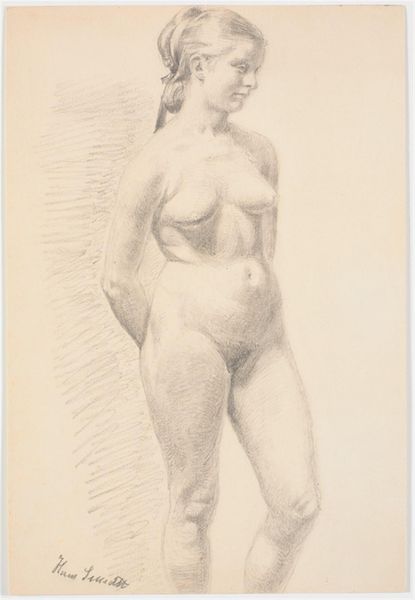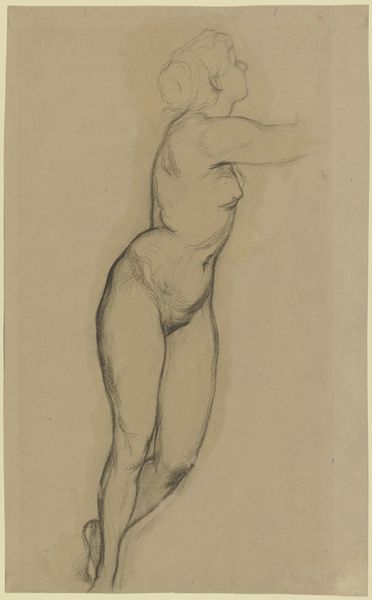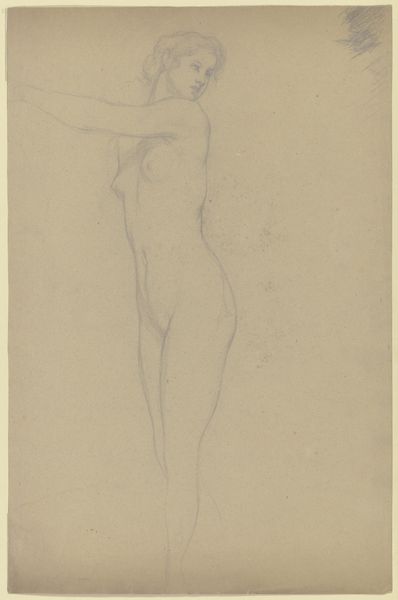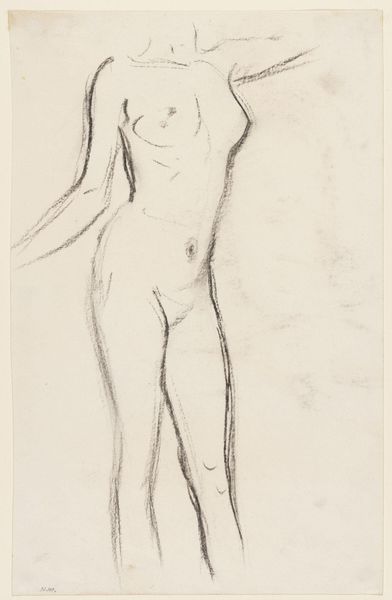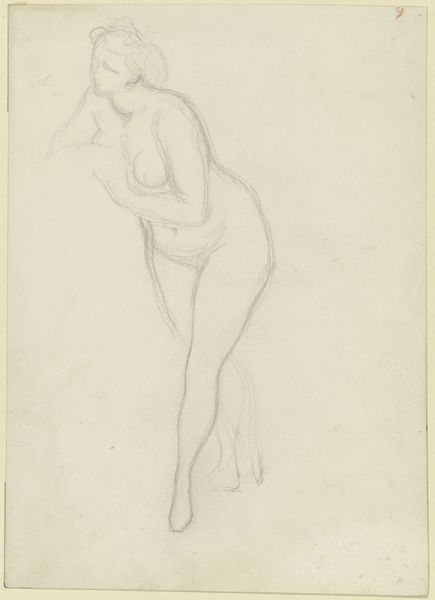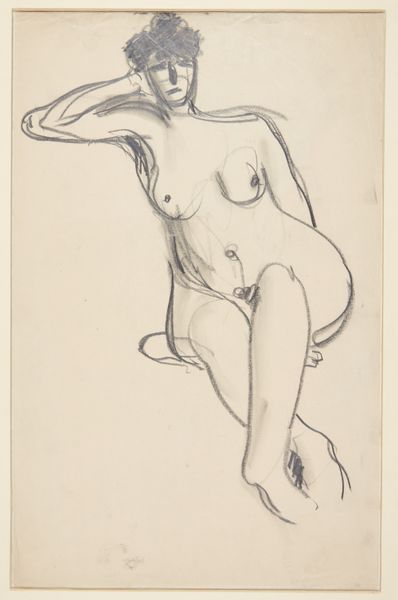
drawing, paper, pencil
#
portrait
#
pencil drawn
#
drawing
#
figuration
#
paper
#
pencil drawing
#
pencil
#
line
#
portrait drawing
#
academic-art
#
nude
Copyright: Public Domain
Curator: Up next is an evocative pencil drawing, "Standing Female Nude," created by Hermann Lismann. It is now a highlight of the Städel Museum collection. Editor: It's captivating; there's an academic almost melancholic serenity about this work, the way she seems to be gazing down at something we cannot see, in a soft sort of contemplation. The shading really enhances the feminine qualities that can be attributed to beauty. Curator: The subtle symbolism indeed enhances that effect. Notice how Lismann's handling of the drapery beside her is not merely an aesthetic decision; its form echoes, yet softens, the lines of her body, creating a dance between exposure and concealment that's laden with visual symbolism about idealized beauty standards and the self. Editor: Yes! The drape introduces layers to the central figure and is interesting in the way Lismann uses light. I read that as a signifier for both physical and psychic vulnerability. It feels almost performative, as if she's aware she is being watched. It's as though the viewer becomes complicit in the very act of objectification this academic work explores. Curator: Precisely! The classical allusions here are overt, from the languid pose reminiscent of antique sculpture to the idealization of form, which draws deeply from Western artistic tradition. However, Lismann manages to complicate that tradition. The direct, almost vulnerable gaze counters the potential for mere objectification, inviting empathy rather than detachment. It's the push and pull between vulnerability and idealism I find fascinating. Editor: This piece encourages introspection. As much as it appears as a classic nude study, there are layers that speak to human emotion, subtly but with profound feeling. Curator: Agreed; it lingers in the mind as an ode to contemplation, doesn't it? And that makes it a true testament to the artist's observational powers as well as an artifact of beauty that invites more profound analysis.
Comments
No comments
Be the first to comment and join the conversation on the ultimate creative platform.
